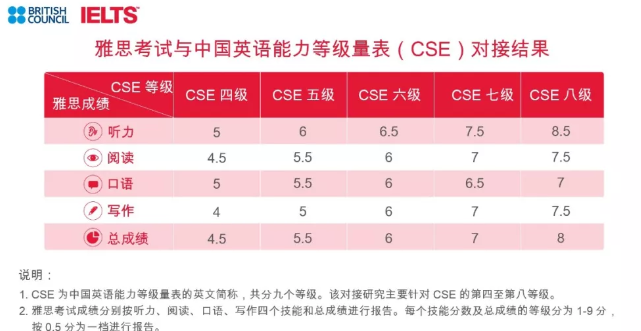美国司法程序中的制衡机制
|
The Adversary System in the American Judicial Process The law of procedure is the body of rules that governs or provides the frame-work of the judicial process. The judicial process, in turn, guides the operation of courts in the determination of legal controversies, or, as a legal scholar defines it, the judicial process is the decision by the court of controversies between individuals (or between an individual and the State)by rational and not merely personal considerations supposedly based on law and justice.1 These definitions are terribly inadequate, but they may serve our purpose if we understand from them the following points;(1)The judicial process deals not with abstract questions or hypothetical situations but with actual controversies between real parties;(2)These controversies are such that the community will direct its collective force to their resolution;(3)This resolution proceeds not arbitrarily but according to some standards of general application;(4)These standards are applied in a proceeding that follows some fixed lines set out by a system of rules known as procedure.2 The rules of procedure are to the litigating lawyer regulatory and enabling legislation:3 They tell or attempt to tell him what the lawyer may and may not do, and they afford the means by which the lawyer can bring about, or attempt to bring about, the results sought. A distinctive element of the American procedure far resolving legal contro?versies is the adversary system, which is the characteristic form of trial procedure in common law countries, in civil as well as criminal cases. Its essential feature is that a decision is made by judge, or judge with jury, who finds the facts and ap?plies the law from submissions made by partisan advocates on behalf of the parties.4 In this system of trial procedure, the responsibility for beginning suit, for shaping the issues, and for producing evidence rests almost entirely upon the par?ties. The court takes almost no active part. It does not do its own investigating. It rarely even asks a question. Most often it is only responsible for guiding the proceeding according to certain procedural rules and for making decisions on ques?tions of law that arise. This system is to be contrasted with what is generally called the inquisitorial system, which is used in countries of the civil law tradition such as France and Germany. In the inquisitorial system of trial, the judge ap?plies the law and finds the facts by his own active investigation and inquiries at trial. Under the adversary system, the scope of the lawyer's power and responsi?bility is wide. It is the lawyer who makes the initial and usually final decisions as to choice of court, size of claim, nature of claim stated, parties, extent and kind of pre-trial investigation, mode of trial (whether jury or non-jury), settlement offers, extent and kind of proofs, style of presentation and argument, and, with?in limits, speed and vigor of presentation. The trials are largely produced and di?rected by the lawyers. They supply the actors and the script, through the wit?nesses called and the testimony elicited by direct and cross examination. Judges are called on to intervene only occasionally and then briefly, to ensure that all the procedural safeguards of due process5 are met and essential fairness is achieved. They rule on the admissibility of evidence, but this is a negative function of keep?ing out unreliable evidence rather than an affirmative one of providing the facts upon which a case is determined.6 The reasons for the prevalence of the adversary system are manifold, but four are certainly among the most important: (1) It is believed that a truer deci?sion will be reached as the result of a contest directed by interested parties.7 An interested party naturally will be most effective in seeking, discovering, and pre?senting the materials which will reveal the strength of his own case and the weak?ness of his adversary's case; (2) The parties, who after all are the persons princi?pally interested in the resolution of the controversy, should bear the major burden of the time, energy and costs required; (3) Although impartial investigation may be better when no final decision need be reached, setting up sides makes easier the type of yes-or-no decision that is thought to be necessary in a lawsuit;8 (4) Since resort to law has replaced resort to force that characterized primitive ages, the human instinct to do battle is better satisfied by a means of settling disputes that are very much in the hands of the parties. Contrasted with the methods of scientific or historical research, this system of finding answers to legal controversies seems sometimes unsatisfactory. When one reflects on the fact that under the adversary system victory often turns on fac?tors other than the true merits of the case, there is reason to be skeptical about it.9 Critics of the adversary system point out that it tends to reduce litigation to a costly game, in which the lawyers become the principal players and the outcome will turn on their skills rather than the justice or true merits of the case. In recent times there has been a trend toward increasing the affirmative or active functions of the court that reflects the larger trend away from the "sporting" or "game" theory of litigation. Nonetheless, it cannot be questioned that in the United States the primary responsibility and control over almost all phases of the judicial process continue to reside in the parties. Full understanding of the American legal procedure will require our constant attention to the existence of the adversary sys?tem as well as critical analysis of its shortcomings. There is but one test of a good system of procedure: Does it tend to the just and efficient determination of legal controversies? In this connection we must un?derstand one thing: Despite the fact that this unit is only an introduction to the American legal system, we are not to assume that our function here is simply to digest uncritically what we learn from this unit. It is a part of our learning pro?cess to examine, "to wash in cynical acid," each rule, each form, each principle we learn.10 But while doing so; keep in mind that many, diverse, and complex are the aspects of both justice and efficiency.11 Word Study partisan a. 党派的,派性的 inquisitorial a. 审讯的,调查的 settlement n .调解 testimony n . 证词;证据 elicit vt.引出;诱出 examination n.询问,质证 direct examination 直接质证 cross examination 交叉质证 intervene vi. 干涉 safeguard n.保护措施,保障条款 due process 正当司法程序 admissibility n.可采纳;可取 affirmative a.肯定的,积极的 prevalence n.盛行,普通 manifold a . 多方面的,种种的 impartial a. 公正的,不偏不倚的 skeptical a. 怀疑的 nonetheless adv. 然而,不过 reside vi. 居住;存在 cynical a.愤世嫉俗 Phrases & Expressions on behalf of 代表;为了 be contrasted with 与……对比 turn on 依赖,取决于 reside in 存在 in this/that connection 在这(那)一点上 Notes 1. …the judicial process is the decision by the court of controversies between individuals (or between an individual and the State) by rational and not merely personal considerations supposedly based on law and justice. 司法程序是由法院根据基于法律和正义的理性而不是基于个人的考虑对个人间(或个人和国家问)争议的裁决。这个句子的结构比较复杂,“supposedly based on law and justice”修饰“considerations",”by rational and not merely personal considerations…“,”by the court“和”of controversies between individuals“都修饰”derision“。”decision…of controversies“是 表示动宾关系的短语。”by rational and not merely personal considerations“说明”decision“的方式。”the court‘实际上是“decision”这一动作的执行者,由“by”引出。 “by the court”本应放在句子的最后,但因句子太长,放在后面不清楚,故提前。 2.These standards title applied in a proceeding that follows some fixed lines set out by a sys- tem of rules known as procedure.这些标准被用于遵循某些固定原则的诉讼,而这些 固定原则又由一套被称为程序法的规则确定。 “known as procedure”修饰“system of rules…”,“set out by a system of rules known as procedure”修饰“fixed lines”,“that follows some fixed lines set out by a system of rules known as procedure”为定语从句,修饰“proceeding”。 3.The rules of procedure are the litigating lawyer regulatory and enabling legislation.程 序法规对诉讼律师来说既是规范性法规又是授权性法规(意思是程序法既规范了诉 讼律师的行为,又是他们行动的依据)。 regulatory and enabling legislation:规范和授权法规 4.Its essential feature is that a decision is made by judge,or judge with jury,who finds the facts and applies the law from submissions made by partisan advocates on behalf of the parties.它的主要特征是由法官(或法官加陪审团)根据双方辩护人所提出的证据认 定事实并适用法律。 “find the facts”认定事实,凡有陪审团参加的案件,由陪审团认定事实。 “apply the law”适用法律,在有陪审团参加的案件审理中。珐官只适用法律,在没 有陪审团参加的案件中,法官既认定事实又适用法律。 "made by partisan advocates on behalf of the parties“修饰”submissions",“from sub- missions made…”修饰“finds”和“applies”。 5.the procedural safeguards of due process: 正当司法程序条款中的程序保障 6.They rule on the admissibility of evidence, but this is a negative function of keeping out unreliable evidence rather than an affirmative one of providing the facts upon which a case is determined.他们(法官)要裁定证据的可接受性,但这是一种消极的作用,是摒弃不可靠的证据,而不是积极地提供作为判案依据的事实。 admissibility of evidence证据的可接受性,一般以证据法为依据来判断证据的可接受 性。 7.interested parties有关的当事人,有利害关系的当事人 8.Although impartial investigation may be better when no final derision need be reached.setting up sidesmakes easier the type of yes-or-no decision that is thought to be necessary in a lawsuit.尽管在不需要作出最终决定的时候不偏不倚的调查可能更合适,但树立 对立面使诉讼所必须的是或否的判决更为简单。 此句的意思是,在某些无须作最终结论的探索(如科学探讨等)中,公正的调查更 可取。但是,法院在诉讼中必须回答是或不是的问题(如是不是侵权,是不是违约),这时候树立对立面,让原被告双方针锋相对地辩论,就使法官对这种是非题作出最终结论变得更为容易了。 9.When one reflects on the fact that 1.1ndeg the adversary system victory often turns on factors other than the true merits of the case,there is reason to be skeptical about it.抗辩制下胜诉往往不取决于案件本身的实体问题而取决于其他因素,想到这点,人们便有理由对其产生怀疑。 true merits of the case:案件所涉的实体问题,案件的是非曲直 10.It is part of our learning process to examine,“to wash in cynical acid,”each rule,each form,each principle we learn.对我们所学的每一条规则,每一种方式和每一个原则进行检查,进行“冷峻的酸处理”,本身就是学习过程的一部分。“cynical”的意思是“愤世嫉俗的”,“不相信人间有真诚善意的”,在此是指不轻易相信每一条规则的合理性。 11.But while doing so,keep in mind that many,diverse,and complex are the aspects of both justice and efficiency. 在此句中,“that”引出的宾语从句是倒装句,正常语序应为:But while doing so,keep in mind that the aspects of both justice and efficiency are many,diverse and complex. |








